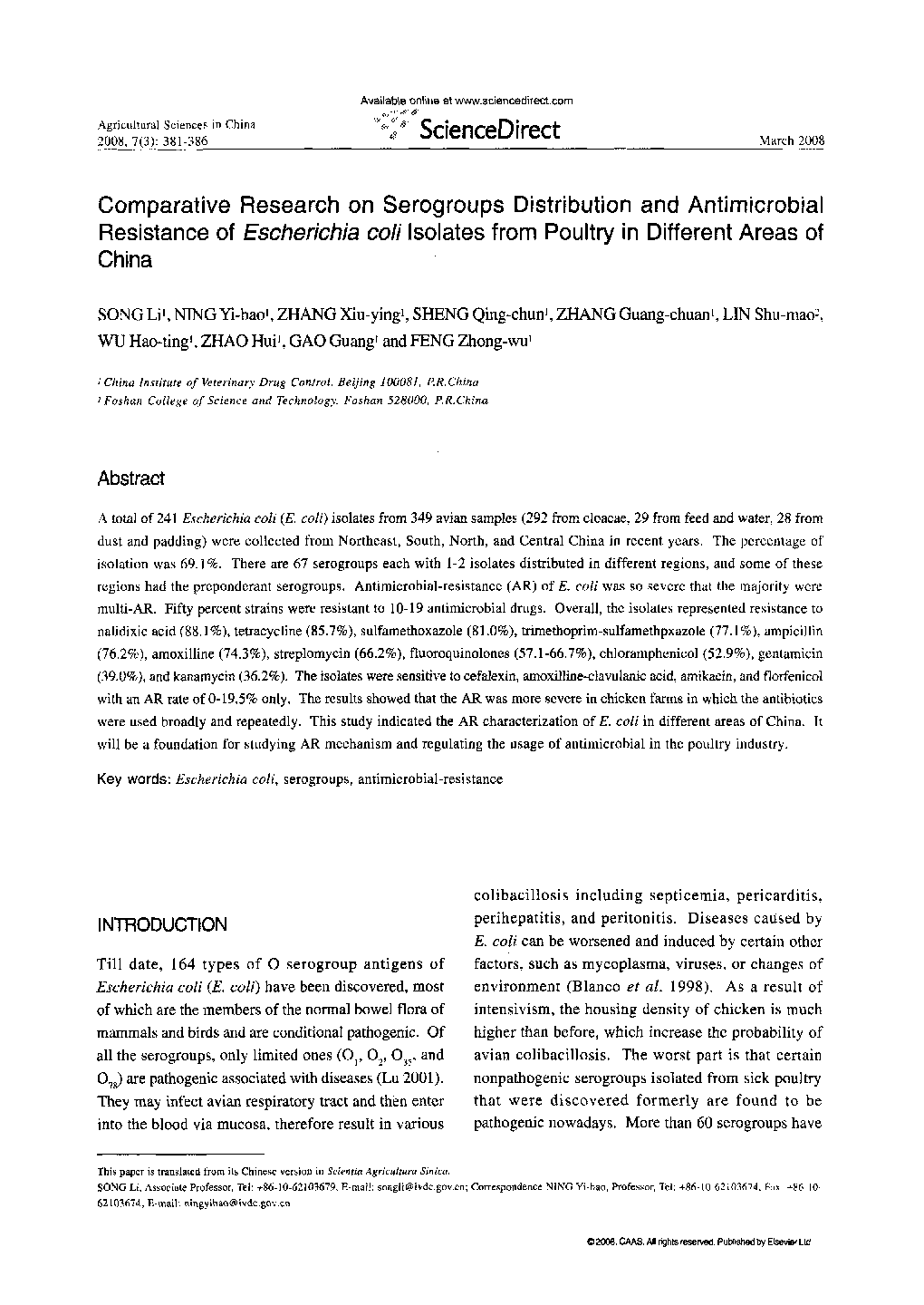| Article ID | Journal | Published Year | Pages | File Type |
|---|---|---|---|---|
| 4490614 | Agricultural Sciences in China | 2008 | 6 Pages |
A total of 241 Escherichia coli (E. coli) isolates from 349 avian samples (292 from cloacae. 29 from feed and water, 28 from dust and padding) were collected from Northeast, South, North, and Central China in recent years. The percentage of isolation was 69.1%. There are 67 serogroups each with 1–2 isolates distributed in different regions, and some of these regions had the preponderant serogroups. Antimicrobial-resistance (AR) of E. coli was so severe that the majority were multi-AR. Fifty percent strains were resistant to 10–19 antimicrobial drugs. Overall, the isolates represented resistance to nalidixic acid (88.1%), tetracycline (85.7%), sulfamethoxazole (81.0%), trimethoprim-sulfamethpxazole (77.1%), ampicillin (76.2%), amoxilline (74.3%), streplomycin (66.2%), fluoroquinolones (57.1–66.7%), chloramphenicol (52.9%), gentamicin (39.0%), and kanamycin (36.2%). The isolates were sensitive to cefalexin, amoxilline-clavulanic acid, amikacin, and florfenicol with an AR rate of 0–19.5% only. The results showed that the AR was more severe in chicken farms in which the antibiotics were used broadly and repeatedly. This study indicated the AR characterization of E. coli in different areas of China. I: will be a foundation for studying AR mechanism and regulating the usage of antimicrobial in the poultry industry.
